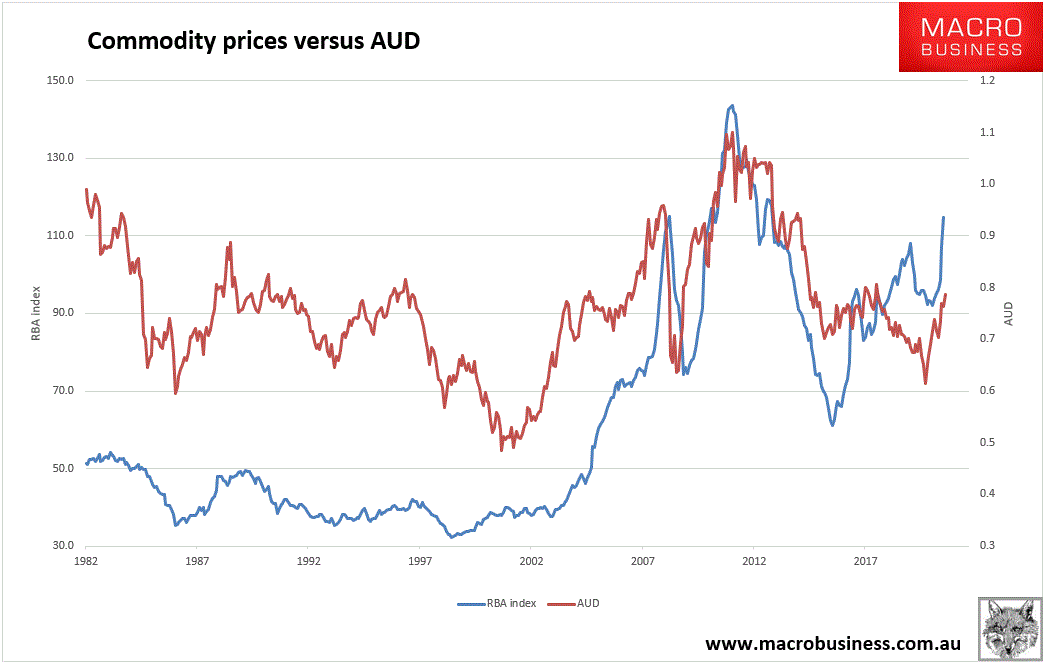Friday night saw the Australian dollar roar higher virtually by itself. It was aided by a weak US dollar but that doesn’t fully explain it. Risk was generally muted and other currencies did not move anywhere so aggressively. Why?
Wall Street bulls are still talking up the AUD despite rising US inflation and yields. Via Goldman:
USD: Higher long-end real yields unlikely to lift broad Dollar. The broad US Dollar was little changed over the past week despite a sharp sell-off in US real rates. We think the stability is explained by three factors. First, front-end rates have not repriced meaningfully (US 2y swap rates are up 1bp this month), and empirically shorter-dated yields matter much more for exchange rates. Second, in contrast to early January, certain non-US markets have increasingly led the sell-off. For example, this month the largest rate increases at the 10y point have been in New Zealand, the UK, Australia, and Canada, with the US market in the middle of pack among G10 economies. Changes in long-end rate differentials may be affecting the Dollar vs certain crosses but have been close to neutral for the greenback overall. Third, the real rate move has occurred alongside pro-growth trends in other assets (e.g. copper prices have gained 14% in February), which may be benefiting EM currencies vs USD and helping to offset the drag from higher global yields. Treasury yields may continue to rise over the coming months, but we do not think this will result in substantial dollar gains, due to the Fed’s guidance on front-end rates, rising yields in other markets, and a pro-cyclical cross-asset backdrop. That being said, economies with the least near-term upside in long-end rates (e.g. the Euro Area and Japan)may see their currencies lag. A number of our trade recommendations already tilt in this direction, including short USD vs AUD and CAD and short JPY vs KRW; in Europe we continue to forecast eventual EUR/USD appreciation but prefer trades in USD-neutral crosses for now (long GBP vs CHF and NOK vs SEK).
But, I think the surge is best seen as part of the underlying trend in commodity prices. Iron ore remains very high and while it does the AUD will keep running:

If I’m going to be wrong this year about the Australian dollar topping out in the low-80s then this will be where. I am bearish iron ore in the second half, kicking off with the regular May seasonal weakness, followed by a decent Q3, then falling more again through September/October for a big step down overall in the RBA index towards 90.
I have a “sell the rallies” position for iron ore miners. My view is that returning supply, lack of profitability in Chinese steel mills, and normalisation in Chinese stimulus will drive it down over time. To wit, at Bloomberg:
China’s banking regulator imposed new restrictions on banks and financial institutions working with online microlenders including those led by Jack Ma’s Ant Group Co., dealing further blows to one of the fastest-growing business segments for financial-technology behemoths.
Banks must cap overall joint lending with internet platforms or other partners at no more than 50% of their outstanding loans, the China Banking and Insurance Regulatory Commission said in a statement on Saturday. Co-lending with one platform should not exceed 25% of the bank’s tier-1 net capital, the CBRIC said.
The wider MB portfolio is still positioned for further AUD strength so we’re hedging the overall view. We’ll move further towards a weak AUD allocation if my bearish iron ore outlook begins to play out.

